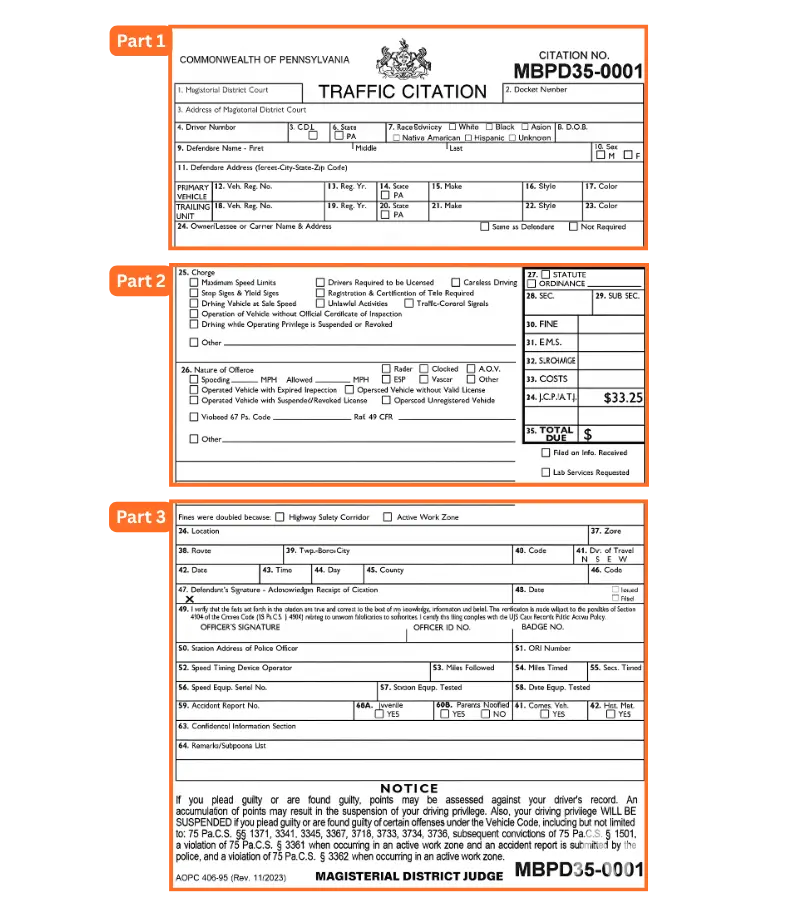Speeding is one of the most common traffic violations in Pennsylvania. Fines typically range from $35 plus $2 for every mile over the limit, but fines double in school zones and construction areas. Speeding tickets also add points to your license, which can increase insurance premiums.
Pennsylvania law bans texting while driving. Violations carry a $50 fine plus court costs, and while no points are added, insurance companies often treat it as a risk factor. Handheld bans may expand under pending legislation, making enforcement stricter in the future.
Reckless driving in Pennsylvania is a serious offense, carrying a $200 fine, 5 points on your license, and a possible 6-month license suspension. If reckless driving causes injury, penalties increase and can include jail time.
Running a red light or stop sign in Pennsylvania typically results in a $100–$150 fine and 3 points on your license. Automated red-light camera tickets carry a $100 fine but do not add points.
Failure to yield to pedestrians, emergency vehicles, or other drivers often results in fines of $25–$150 and adds 3 points to your record. If the violation causes a crash, penalties are higher and may include suspension.
Driving without insurance in Pennsylvania can lead to a $300 fine, a 3-month license suspension, and vehicle registration suspension. Drivers must also pay reinstatement fees and provide proof of insurance to get their license back.
To say it simply – we are your best chance at winning. Our pro lawyers have years of experience in courts, successfully slamming thousands of tickets.
We let you know if there’s a win in sight or if your ticket’s a lost cause. You can enjoy not being taken for a ride, just simple straight talk.
Submit your ticket and step back. We offer a valet-like service, taking on the mental load of your ticket, so you don’t have to.
Forget automated responses; at Flickit, you’re guaranteed support from real, empathetic humans – every step of the way. Message us and expect a call-back!
Leave the courtrooms to TV shows. Flickit handles all the real-life legal stuff, because who has time or patience for all that drama?
By keeping your license points down, you’ll avoid your insurance premiums from rising. That’s a lot of money at stake down the line.
